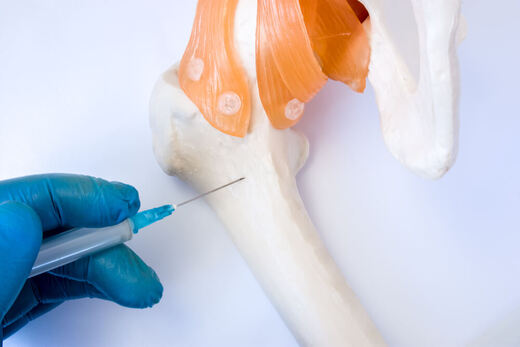Bone Marrow Biopsies
- Home
- //
- Bone Marrow Biopsies
Bone Marrow Aspiration And Biopsy
The Procedure: The diagnosis of blood disease may require examination of the bone marrow. Bone marrow is a soft tissue that is inside some of the larger bones. The bone marrow produces the red and white blood cells and plate lets (these help the blood to clot).
When abnormal types or numbers of red or white blood cells are found in a complete blood count, bone marrow analysis may detect the cause of the abnormality.

Examination of the bone marrow is indicated in the following situations:
- Diagnosis and follow up assessment of acute and chronic leukemia’s
Staging of various forms of cancer - Unexplained deficiency or excess of blood cells
- Unexplained prolonged fever
- Other clinical situations when judged indicated by hematologist
A biopsy is a method of removing a small tissue sample from the body to have it examined under a microscope. Results from a bone marrow biopsy provide important diagnostic information to guide treatment and to determine prognosis. Bone marrow aspiration is also referred to iliac crest tap or sterna tap and involves suctioning some of the bone marrow for examination. Aspiration is used to diagnosis leukemia and other disorders that affect the blood. It may help determine if cancers have spread. It is also helpful in diagnosing some types of anemia and infections.
What Happens During The Procedure: Although a variety of areas can be used, generally the iliac crest (hip area) will be used. You will be positioned on your side or on your abdomen. The rear area of your hip will be cleansed with an antiseptic solution and draped with sterile towels. The doctor will inject the area with a local anesthetic. The doctor will then insert a biopsy needle into the bone marrow. This usually takes less than 30 seconds. After the needle is removed, pressure will be applied to the area for 5 to 10 minutes or until bleeding stops. A sterile dressing will be applied over the site.
Risks: Before undergoing this procedure, understanding the risks is essential. No procedure is completely risk-free. The following risks may occur, but there may be unforeseen risks and risks that are not included on this list. Some of these risks, if they occur, may necessitate additional surgery, prolonged hospitalization, and/or extended outpatient therapy to permit adequate treatment.
1. There may be some bleeding at the puncture site.
2. You may develop infection
3. You may experience pain at the time of the procedure, unless it is performed under sedation or anesthesia.
After The Procedure: You will feel sleepy from the medications used to reduce pain and anxiety. Once these medications have worn off (a few hours after the procedure), you can return to normal activities, but you should not drive or drink alcohol for the rest of the day. If medication is given, you need a driver to drive you home.
Alternatives: The alternatives to this procedure include, not undergoing the procedure. If you decide not to have this procedure, there may be associated risks to this decision. Please discuss it with your doctor.

